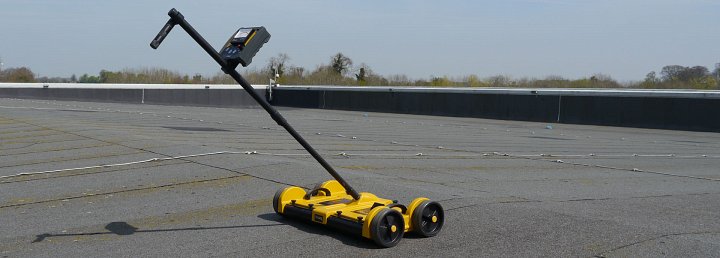At Tramex we design quality tools for professionals for use in specialized applications. We believe training is mandatory for using the correct tool to do a great job and we support a large number of excellent training schools around the country to ensure our customers get the most out of our products.
The Dec Scanner is by far the simplest device to use for moisture testing and leak detection of a flat roof, however even a small amount of training can help new users to avoid simple pitfalls.
We will lay out, in these pages, some of the key steps to enable the user to get the best out of this powerful instrument, including setting up and calibrating to a roofing system, developing a methodical approach to inspection and recognising false positives.











 Obtaining as much information about the roof as possible in advance is invaluable. A set of roof drawings or plans make moisture mapping much easier and a knowledge of the construction will make the job of calibration much faster.
Obtaining as much information about the roof as possible in advance is invaluable. A set of roof drawings or plans make moisture mapping much easier and a knowledge of the construction will make the job of calibration much faster.  If a set of drawings or roof plan is not available, prepare a plan and report sheets for each section being surveyed or, better still, use the
If a set of drawings or roof plan is not available, prepare a plan and report sheets for each section being surveyed or, better still, use the  Selected suspect wet areas should be confirmed by core sampling using gravimetric analysis in accordance with
Selected suspect wet areas should be confirmed by core sampling using gravimetric analysis in accordance with 